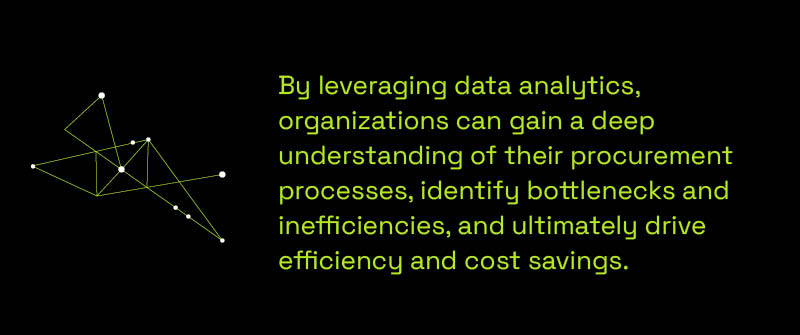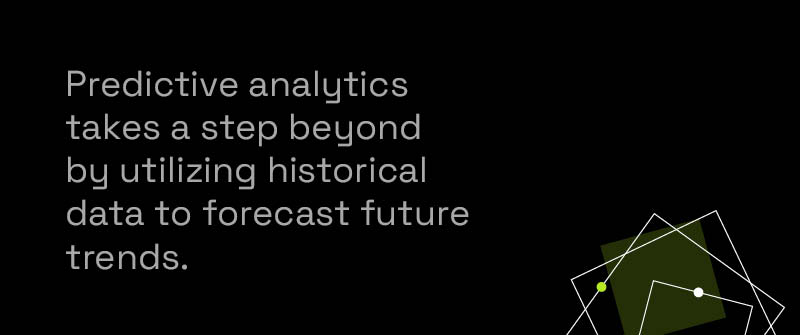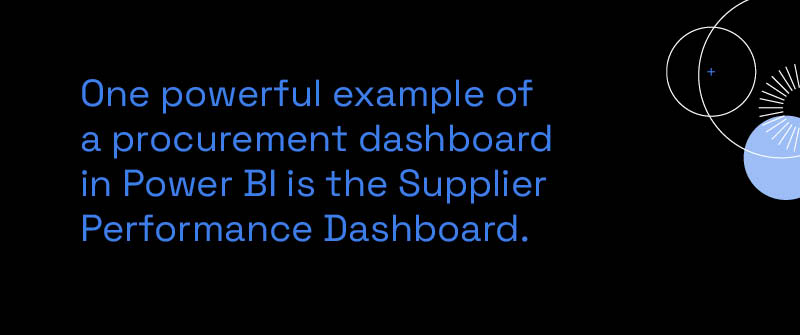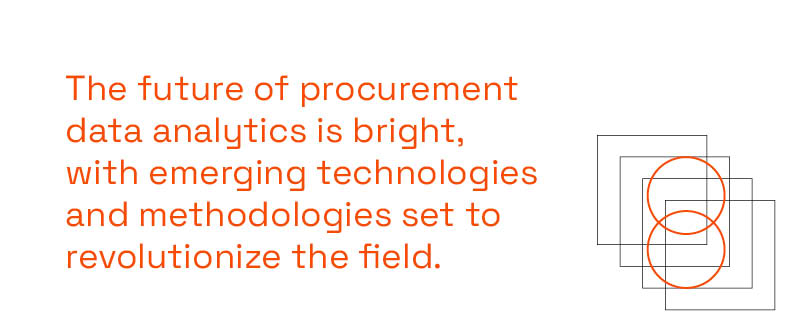
What Is Data Analytics In Procurement?
Definition and Concept of Procurement Data Analytics
In today’s complex and rapidly evolving business landscape, procurement data analytics stands as a fundamental pillar for driving operational excellence. Procurement data analytics refers to the process of collecting, processing, and analyzing vast amounts of data related to manufacturing data analytics activities to extract actionable insights. This discipline encompasses the use of various methodologies and technologies to analyze data, ranging from basic descriptive statistics to sophisticated predictive and prescriptive analytics.
Importance of Data Analytics in Procurement
The importance of data analytics in procurement cannot be overstated. By leveraging data analytics, organizations can gain a deep understanding of their procurement processes, identify bottlenecks and inefficiencies, and ultimately drive efficiency and cost savings. Data analytics enables procurement teams to make data-driven decisions, which leads to more strategic sourcing, better supplier relationships, and optimized inventory management. This level of insight is crucial for staying competitive in the market.

How Procurement Data Analytics Drives Efficiency and Cost Savings
Procurement data analytics drives efficiency and cost savings through various means. With meticulous analysis of procurement data, businesses can optimize their supply chain by identifying the best sourcing options and negotiating more favorable contract terms. Analytics can also pinpoint areas of excessive spending and suggest alternatives that reduce costs without compromising quality. Moreover, predictive analytics help in forecasting demand accurately, ensuring that the organization is neither overstocked nor understocked, thus minimizing inventory carrying costs.
Implementing procurement data analytics not only results in substantial direct cost savings but also enhances overall operational efficiency. It equips procurement teams with the insights needed to streamline processes, eliminate redundancies, and foster more collaborative supplier relationships. Consequently, the adoption of data analytics in procurement transforms the function from a cost center to a strategic enabler of business success.
What Are The Techniques Used In Procurement Data Analysis?
Effective procurement data analysis hinges on a variety of sophisticated techniques, each serving a unique function to provide actionable insights. Let’s delve into some of the most crucial techniques utilized in this domain.
Descriptive Analytics: Understanding Historical Data
Descriptive analytics forms the baseline, offering a comprehensive overview of historical data. Summarizing past procurement activities allows decision-makers to gain insights into spending patterns, supplier performance, and procurement cycle times. This backward-looking approach is foundational as it sets the stage for more advanced analytics by establishing a factual basis from which future projections and strategies can be developed.
Predictive Analytics: Forecasting Future Trends
Predictive analytics takes a step beyond by utilizing historical data to forecast future trends. Through sophisticated procurement data analytics tools that employ machine learning and statistical algorithms, businesses can anticipate demand fluctuations, potential supply chain disruptions, and even price changes. This forward-looking technique provides businesses with a proactive stance, enabling them to mitigate risks and seize opportunities.

Prescriptive Analytics: Suggesting Optimal Actions
While predictive analytics forecasts the future, prescriptive analytics recommends the best course of action based on those predictions. By analyzing multiple scenarios and their potential outcomes, this technique helps procurement professionals make well-informed decisions on supplier selection, contract negotiations, and inventory management. It’s about finding the optimal strategies to achieve procurement goals efficiently.
Text and Sentiment Analysis in Procurement
In today’s data-rich environment, procurement analytics examples are not limited to numerical data. Text and sentiment analysis are increasingly being used to understand supplier reviews, contract terms, and even social media discussions about potential suppliers. This technique can unearth qualitative insights, providing a fuller picture of supplier reputation and market sentiment.
What Is An Example Of Procurement Data?
Understanding the various examples of procurement analytics can significantly drive your business toward strategic decision-making. Let’s dive into some real-world examples to grasp what procurement data looks like and how it can be utilized.
Case Study: Successful Procurement Data Analytics Implementation
Case Study: BKF Technologies’ Data-Driven Transformation
A standout example comes from BKF Technologies, where leveraging advanced data analytics transformed their procurement process. By integrating Microsoft Power BI for procurement and Fabric, BKF gained critical insights into historical purchase orders, vendor performance, and delivery timelines. This allowed them to negotiate better terms, optimize inventory levels, and streamline procurement operations. The result? Significant cost reductions, improved supply chain resilience, and the prevention of stockouts—ensuring their manufacturing processes remained efficient and reliable.
Detailed Analysis of Procurement Reports
Analyzing a procurement analysis report typically involves evaluating various data points such as purchase order volumes, procurement cycle times, and spending patterns across different vendors. For instance, a report might reveal that a particular vendor consistently delivers components late, thus affecting production schedules. This information can lead to a reassessment of vendor relationships or the onboarding of alternative suppliers.
Key Performance Indicators (KPIs) and Metrics Used
Key performance indicators (KPIs) are critical in monitoring and measuring the efficiency of procurement processes. Common KPIs include:
- Cost Savings: Tracking reductions in procurement spending.
- Supplier Lead Time: Measuring the time taken from order to delivery.
- Compliance Rate: Ensuring purchase orders adhere to contract terms.
- Supplier Performance Score: Evaluating vendor reliability and quality.
Leveraging these KPIs helps in making data-driven decisions that optimize procurement functions and contribute to overall business success.
In essence, the examples and metrics provided are not just numbers on paper. They manifest as actionable insights that empower your procurement teams to make informed, strategic decisions aimed at bolstering your supply chain and enhancing operational efficiencies.
What Data Is Needed For Procurement?
In the realm of procurement data analytics, identifying and collecting the right data is pivotal to maximizing efficiency and effectiveness. Understanding what data is required helps in generating valuable insights for better decision-making. Here’s a detailed look at the essential types of data needed for effective procurement.
Supplier Information and Performance Data
Suppliers are the backbone of any procurement process. Accurate and comprehensive supplier information is essential for evaluating supplier reliability and performance. This includes data on delivery times, quality of goods and services, compliance with contracts, and past performance metrics. Such information can help you identify which suppliers are the most reliable and cost-effective, ultimately contributing to strategic partnerships and optimized procurement plans.

Procurement Transaction Data
Tracking procurement transactions is another cornerstone of effective procurement analytics. This data includes purchase orders, invoices, contracts, and payment records. By analyzing this data, procurement professionals can identify spending patterns, monitor compliance with procurement policies, and detect any discrepancies or opportunities for cost savings. This type of data is also invaluable when negotiating terms with suppliers or during audits.
Market and Price Trends Data
To make informed purchasing decisions, procurement departments need access to market and price trends data. This can include industry reports, pricing indices, and economic forecasts. By understanding market dynamics and price fluctuations, procurement teams can time their purchases more strategically, negotiate better prices, and reduce costs. Real-time data on raw material prices or currency exchange rates can also assist businesses in navigating market volatility.
Internal Procurement Process Data
Finally, internal data on your own procurement processes can offer insights into areas where efficiencies can be improved. This could include cycle times for different procurement activities, internal compliance rates, and the effectiveness of procurement strategies. By analyzing internal data, businesses can streamline processes, reduce bottlenecks, and improve overall procurement performance.
Collectively, these types of data form the bedrock of a robust procurement data analytics strategy. They enable businesses to make data-driven decisions that optimize costs, enhance supplier relationships, and improve operational efficiency.
Conclusion
In the rapidly evolving world of business, leveraging procurement data analytics has never been more crucial. The ability to transform raw data into meaningful insights can drive significant business value, offering efficiency, cost savings, and strategic advantages.
Summarizing the Significance of Procurement Data Analytics
Throughout this article, we’ve explored the essential components and benefits of procurement data analytics. From understanding what data analytics entails to the various techniques employed, such as descriptive, predictive, and prescriptive analytics, it’s clear that data-driven decision-making offers a competitive edge. Real-world examples illustrated how detailed procurement reports and KPIs underpin effective strategies, while the necessary data for procurement operations emphasized the importance of comprehensive information management.
Future Trends in Procurement Data Analytics
The future of procurement data analytics is bright, with emerging technologies and methodologies set to revolutionize the field. Artificial Intelligence and Machine Learning are paving the way for more sophisticated predictive models, while big data technologies allow for the processing of vast amounts of information at unprecedented speeds. As these technologies advance, companies that invest in robust data analytics capabilities will be better positioned to predict trends, manage risks, and optimize their supply chains.

Resources and Courses for Aspiring Procurement Data Analysts
For those looking to delve deeper into the world of procurement data analytics, there are numerous resources and courses available. Reputable online platforms offer courses ranging from beginner-level introductions to advanced courses covering specific procurement data analytics tools and methodologies. Continuous learning and professional development are key to staying ahead in this dynamic field, ensuring that your skills and knowledge remain relevant and impactful.
Empower your business decision-making with P3 Adaptive. Our expert consultants transform your complex data into clear, actionable insights, enabling you to make confident and swift decisions to drive your business forward. Contact P3 Adaptive Today!
Get in touch with a P3 team member